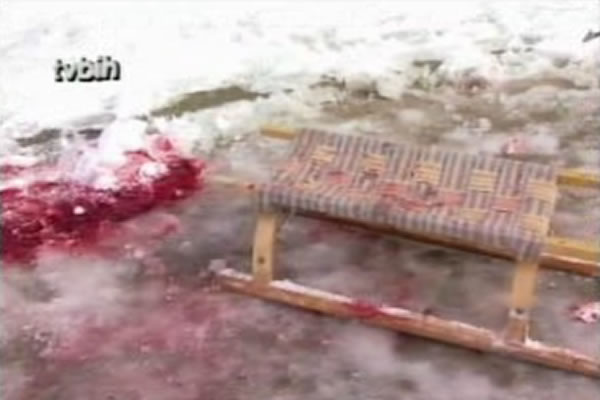Home
CONTESTING SARAJEVO INVESTIGATIONS
In the cross-examination of Mirza Sabljica, Ratko Mladic’s defense contested the claim that the Serb forces were responsible for the artillery incidents listed in the indictment. The defense suggested that the shells could have been fired from BH Army positions, and highlighted the differences in the reports produced by various local investigation teams and the fact they did not tally with the findings of UNPROFOR’s investigations
 Photo of the place where the children play on 22nd of January 1994
Photo of the place where the children play on 22nd of January 1994 Ratko Mladic’s defense continued the cross-examination of Mirza Sabljica, former ballistics expert of the Sarajevo Security Services Center. The defense contested the claim that the Serb forces were responsible for the artillery incidents listed in the indictment, suggesting that the shells could have been fired from BH Army positions.
The defense contested the findings of the Sarajevo ballistics experts that the shells that fell among the children playing in the snow on 22 February 1994 were fired from the direction of the Institute for the Blind in Nedzarici, under the VRS control. Defense counsel Lukic brought up an UNPROFOR report stating that the shells were fired from the direction of Butmir, under the control of the BH Army. The witness replied that he firmly stood behind the conclusions of his team.
Turning to the Markale incident of 5 February 1994, the defense noted that two investigations were conducted. The first to investigate the crime scene was a team of the Sarajevo Security Services Center. The witness was part of that investigation. The next day, the scene was visited by another team, led by Professor Berko Zecevic to do a new investigation. The defense found it suspicious that the results of those investigations weren’t identical. The witness said there was nothing strange in that. There could be small differences in the measurements used to establish the origin of fire, but they couldn’t influence the final conclusions, the witness explained.
As regards Markale, the defense claimed that technical equipment used in the investigation was not in good working order. The defense counsel put it to the witness that the ‘measuring tape’, which has two sets of black and white 1 centimeter blocks and was used to measure the remains of the shell wasn’t good. According to the defense counsel, the black and white blocks shown in one of the photos weren’t of the same length. This, the defense counsel implied, indicated that there was an attempt to ‘cover up some evidence’. The witness said that the visual difference in the length of the blocks could be a result of the angle at which the photo was taken. The witness told the defense counsel he would have to discuss all the other issues relating to the photo with its author.
Speaking about the shelling of the humanitarian aid queue in Dobrinja 4 February 1994, the defense counsel noted there was a police station in the immediate vicinity of the site. The defense counsel also noted that three shells exploded that day in Dobrinja but only two impact sites were investigated. Sabljica confirmed that the police station was indeed located somewhere in the area but couldn’t be specific. Sabljica also confirmed that the site of the third explosion wasn’t investigated because the shell hit a nearby religious building, causing no casualties.
Lukic showed the witness a photo with an arrow, which, as he said, marks the origin of fire and points to the west. In his report, the witness claimed the arrow pointed east, towards Lukavica, which was under VRS control. The witness dismissed the claim, and explained that the arrow in fact marked the direction of flight of the shell, which flew in from the east to the west, from the place where it was fired to the site of impact in Dobrinja. It was put to the witness that the metal remains of the shell could interfere with the compass. Sabljica agreed it was possible. However, the witness added that it wouldn’t have significantly affected the findings of the investigations. The reports always noted that a standard deviation of +/- 5 per cent was possible, Sabljica explained.
Linked Reports
- Case : Mladic
- 2013-02-05 WITNESS SPEAKS ABOUT MARKALE ON THE ANNIVERSARY OF MASSACRE
- 2013-02-01 MEDIA WERE ‘UNCONSCIOUSLY’ BIASED
- 2013-02-01 MLADIC TO PAY PART OF COST OF HIS DEFENSE
- 2013-02-07 RATKO MLADIC – CHARMER AND BULLY
- 2013-02-08 ‘HONEST MAN’ WHO DIDN’T SPEAK THE TRUTH
- 2013-02-11 ‘ROSES’ AND ‘PAWS’ ON ASPHALT IN SARAJEVO
